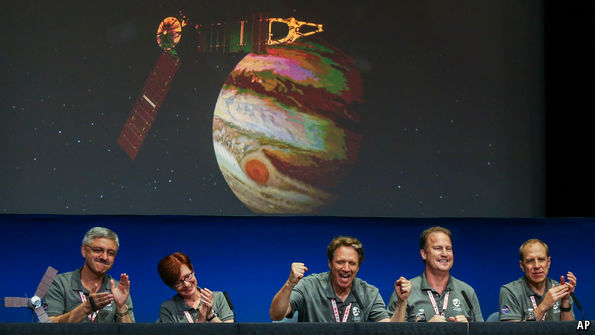A probe to Jupiter has arrived successfully

IT WAS exactly rocket science. In the early hours of Tuesday morning, cruising at a speed of around a quarter of a million kilometres an hour, some 868m km from Earth, and with Jupiter, the solar system’s biggest planet, looming in its cameras, a small space-going robot called Juno began a delicate task. This was to slam on the brakes and slow itself enough to allow it to be captured by Jupiter’s gravity.
Orbital insertions are difficult manoeuvres at the best of times. But Juno was beyond any human help. It had about half an hour to complete its job and, even at the speed of light, messages from the probe back to its masters on Earth would take longer than that to arrive. If anything went wrong it would therefore have to cope on its own.
In the end, everything went flawlessly. Back on Earth, watching humans breathed a sigh of relief: “To know we can go to bed tonight not worrying about what is going to happen tomorrow is just awesome,” said Diane Brown of NASA’s Jet Propulsion Laboratory, which built Juno.
Over the next couple of years, in a series of looping orbits designed to minimise its…Continue reading
Source: Economist




